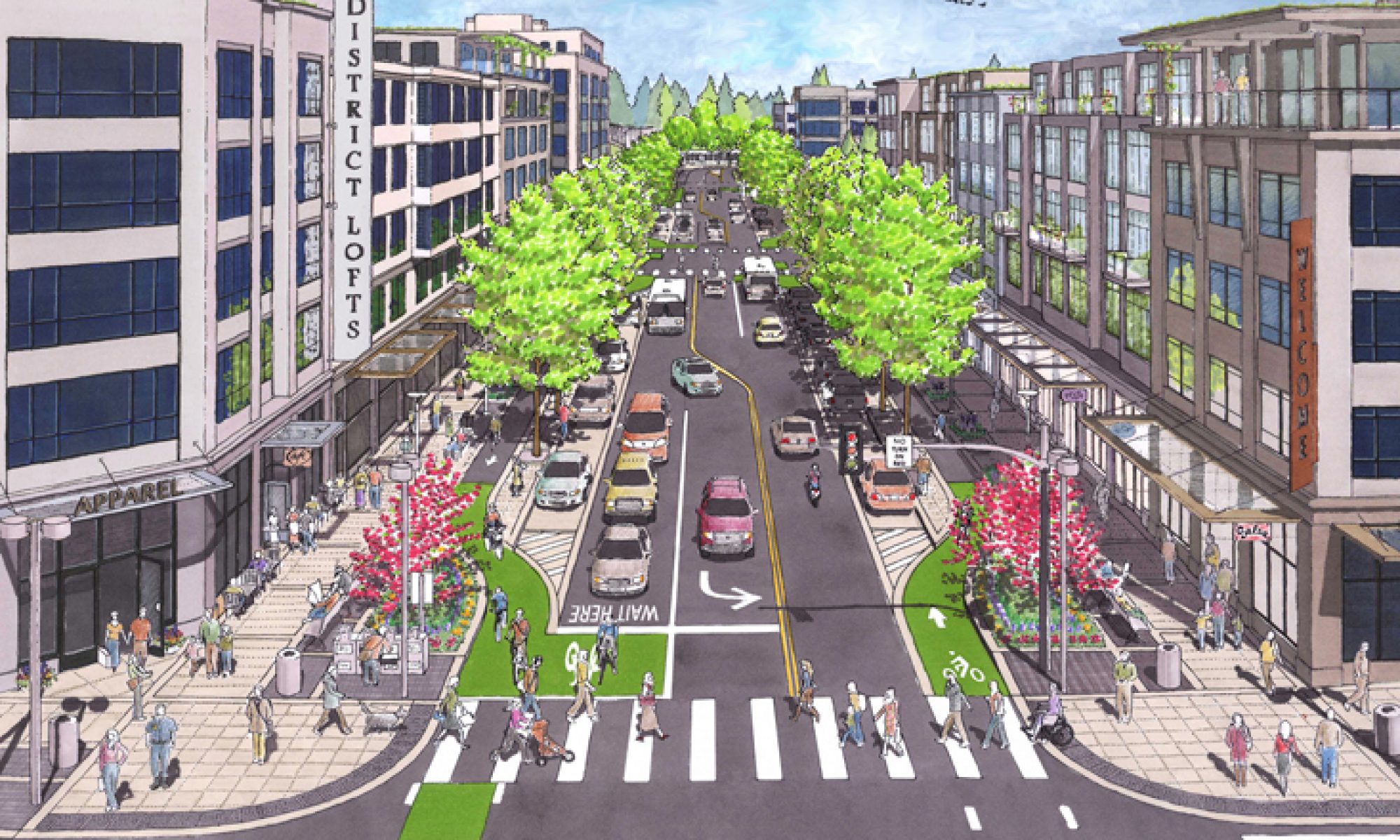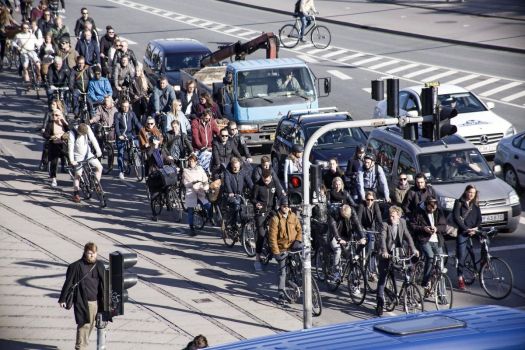Copenhagen wasn’t always a bicycle rider’s dream.
Like cities all over the US, Copenhagen once embraced car culture as a mark of economic advancement after the depression, and post WWII. By the mid-1960s streets were clogged with cars. More and more traffic fatalities occurred, and cars had a environmental impacts. Then came the oil crisis of 1973…and Copenhagen responded differently than the US. Instead of implementing the dangerous “right turn on red” to keep cars moving to save gas, Copenhagen made it less desirable to drive and easier and safer to ride bikes. While we’ve struggled more and more over the years with traffic congestion, crashes, and hard-to-find parking, Copenhageners protested, and have been getting more and more bike infrastructure ever since. Here’s how it was done.
James Thoem is a project manager with Copenhagenize, a consultancy that works with cities to create more bicycle-friendly streets. He is working on a project for the City of Detroit, creating its entire greater downtown bicycle strategy.
What Bicycle-Friendly Copenhagen Can Teach Us About Commuting
Copenhagen Special to the Globe and Mail
Copenhagen’s bicycle-friendly streets are often used as a model for other cities around the world.
What most tourists, and even many Copenhageners, don’t realize is that the city wasn’t always this urban-mobility utopia.
Cars were seen as “vigorous symbols that the Depression of the 1930s and the darkness of World War II had lifted,” according to a history by Lotte Ruby on Denmark’s official website.
As more families could afford to buy cars, the city demolished cycling infrastructure it had built in the first half of the 20th century to make room for roads and parking. By the mid-1960s, thanks to a postwar economic boom, the roads were clogged with cars. But then a few things happened to bring about a road revolution: a growing number of people were killed in traffic accidents, there was vigorous opposition and protests against new road projects that would have cut through some of the city’s most beautiful areas and pollution was becoming a problem. Then, the oil crisis hit Denmark hard in 1973, prompting a new policy focus on energy independence and conservation, including car-free Sundays.
Read more…



One Reply to “Copenhagen Wasn’t Always Bike Rider’s Paradise”